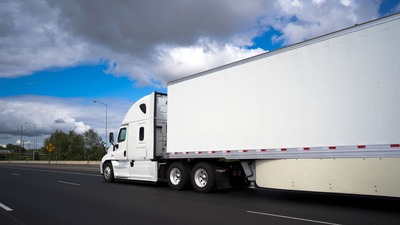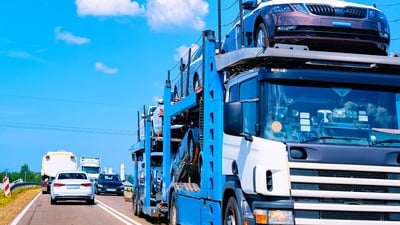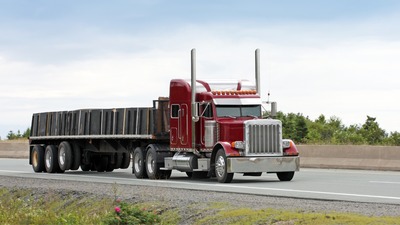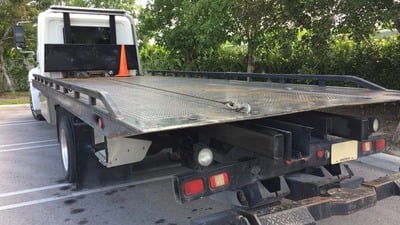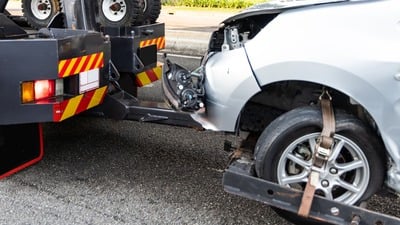Introduction to Transporting Wide Loads Safely
When it comes to transporting wide loads, safety should never be an afterthought. Wide loads, those bulky items that extend beyond the width of a standard vehicle, require special attention to move them from A to B without a hitch. It's more than just getting permits; you've got to know the roads, be aware of your cargo's dimensions, and ensure your vehicle is up to the task. Each state may have its own set of rules for wide loads, which is why having a solid plan in place is critical. In this section, we'll help you understand the essentials of transporting wide loads safely, so you can get your cargo to its destination without causing harm to property, other road users, or yourselves. Stay tuned as we break down the must-know safety tips that'll keep your transport smooth and incident-free. Buckle up!
Understanding the Importance of Wide Load Banners
Wide load banners are a big deal when you're moving hefty items that stick out past the sides of your vehicle or trailer. Why do they matter? Well, they're like a heads-up to other drivers and law enforcement that something wide is rolling down the road. This isn't just about being polite; it’s about keeping everyone safe, including you. Here's the bottom line: you've got to use wide load banners, so everyone knows to give you the space you need, and they don't end up with a surprise that causes a wreck. Plus, using these banners is the law in many places. Stick one on the front and back of what you're hauling, and you’re helping to prevent accidents. That's a responsibility you don't want to take lightly, because staying safe on the road is a serious business. Stay smart, use those banners.
Pre-Transportation Checklist for Wide Loads
Before you hit the road with a wide load, there's a checklist you need to nail down to make sure everything goes smoothly and safely. First up, get the right permits. No shortcuts here; each state has its own rules, and you gotta stick to 'em. Second, plan your route with care. You don't want any surprises like low bridges or tight turns. Third, your load needs to be secure. Double-check those tie-downs – a loose load is a no-go. Fourth, flag it and light it up. Make sure everyone can see you coming from a mile away. And lastly, get an escort if you need one. Some big loads require a buddy to guide you along. Stick to this list, and you'll be set for a safe trip.
Best Practices for Securing Wide Loads on the Road
Securing wide loads properly gets you halfway to your goal—safe delivery with no hiccups. Let's keep it straight: your main aim is to avoid any shifting or falling during transport. Use strong tie-downs, at least four for any load, more if you're hauling something huge. Every strap or chain you toss over has one job: keep that load in its place like it's set in stone. Always check the weight rating of your tie-downs; they should be up to the task, just like the best players on a football field. Double-check the anchor points, too. They need to stiff as a board, unmovable, bolted down to your trailer good and tight. And remember, after you start rolling, make a pit stop after a short distance. Give everything a once-over, tighten up any slack because straps can get a little loose as they settle in. It's all about the balance—too loose, and your load plays hopscotch on the trailer; too tight, and you might stress the straps or the load. Get it just right. Keep it simple, secure, and solid—that's how you nail the wide load transport game.
Navigating Roadways and Traffic with Wide Loads
When you're moving wide loads, owning the road requires skill and respect for safety. Wide loads can disrupt the flow of traffic and present unique hazards. The number one task is to plan your route. Long before you rev the engine, map out a path that avoids low bridges, tight turns, and congested areas. Lay the groundwork by contacting appropriate authorities to get the necessary permits; they ensure your haul is legal and tip off on any travel restrictions. Visibility is your next best friend. Equip your vehicle with bright warning flags, eye-catching signs, and, for those late hours, proper lighting to announce your presence to fellow drivers. Be obvious and be safe. Don't ride solo if you can help it. A qualified escort vehicle can keep you clear of trouble, acting like your road guardian. They can scout ahead, manage the traffic, and help you snake through difficult spots without incident. Patience, always pack an extra dose of it. Transporting wide loads means you're often slower than regular traffic. Stay calm, keep your cool, and make decisions unhurriedly. Rushing increases risk for everyone. A smooth operator knows that the cargo's security is a top priority. Double-check that your load is strapped down tight. Every bump is a test, and a well-secured load is less likely to take a dangerous tumble. Mastering these tips turns wide-load transport from a nail-biter into a fine-tuned dance between you, the road, and the load. Drive smart.
Legal Considerations and Compliance for Wide Load Transport
When you're hauling wide loads, the law isn't kidding around. There are a handful of things you gotta square away before hitting the road. First, understand that a wide load is anything that's wider than a standard truck, which is usually 8.5 feet across. You'll need special permits for every state you plan to drive through, and the cost and requirements for these permits can vary widely. Stay sharp because you're also expected to follow specific driving rules for wide loads, like not zooming down the road during peak traffic hours or at night in some places. And remember, those extra-wide loads need proper signage—you know, those "Wide Load" banners and safety flags—to give other drivers a heads-up. Heads up on safety escorts, too. In some cases, your load’s size might mean you need a follow car or even a police escort to keep things smooth. Play by the rules, and you'll avoid costly fines, delays, and, most importantly, keep everyone safe out there.
Communication Strategies While Transporting Wide Loads
When you're hauling wide loads, talking right on the road isn't just polite—it's critical. Truckers, you've got to be clear with everyone from the pilot cars to the drivers in your rearview. Use your CB radio to keep in touch with your escort vehicles. They're your eyes where you've got blind spots. Make sure everyone's on the same channel, literally. And hey, use those signals early and often. No surprises. Other drivers will thank you for the heads up when you're making wide turns. Keep it simple when you're communicating. This is no time for lingo that not everyone gets. Clear directions, updates on your location, traffic heads-up—keep it short and straightforward. Remember, a misunderstanding can lead to a real mess with an oversized load. Stay sharp, stay connected, and keep everyone in the loop. It's the road warrior's way to haul that hefty cargo safely.
Emergency Preparedness and Handling Unexpected Situations
When hauling wide loads, always be ready for the unexpected. An ounce of prevention is worth a pound of cure, as they say. First, have an emergency kit on board. This should pack reflective triangles, flares, a fire extinguisher, and basic first aid supplies. You'd rather have it and not need it than the other way around. Unexpected weather can throw a wrench in your plans. Stay updated on forecasts and have contingency routes mapped out. If a storm hits, know when to pull over and wait it out. Safety first, schedule second. In case of mechanical trouble, regular checks on your rig are crucial. Don't skimp on pre-trip inspections. Look over tires, brakes, and lights before hitting the road. If something feels off, trust your gut—better to fix a small issue than deal with a big one mid-transport. Traffic incidents are a reality of the road. Keep your cool and maintain clear communication with escort vehicles and surrounding traffic. Using your radio effectively can help prevent misunderstandings and keep everyone informed. Lastly, in the event of an accident or roadblock, having a clear plan can save time and stress. Know the contact for road assistance, ensure your mobile devices are charged, and keep relevant paperwork handy. When the unexpected strikes, being prepared is your best defense.
Post-Transportation: Ensuring Safety After Arrival
Once the journey's done, don't just walk away. Unloading wide loads is as critical as the transport. Do it wrong, and all that care on the road could be for nothing. Have a solid plan and follow these steps. First, check the area. Make sure it's clear and stable. Then, guide the unloading with clear signals, no room for misunderstanding here. Keep people back. Only those involved should be near. And don't rush. Take your time to steady everything down safely. Finally, once it's all unloaded, double-check the space. Leave nothing behind that could trip up the next person. That's how you nail the last phase of transporting wide loads.
Recap of the Top 5 Essential Wide Load Safety Tips
Before you hit the road with a wide load, remember these core rules. First, always snag the proper permits – no shortcuts here. You need the paperwork that says "yes, you can move that giant thing." Second, play it extra safe with the marked difference; ensure your load has the right flags, lights, and signs so everyone knows it's wide. Third, escort's not just for VIPs – get a pilot car to lead the way if your load's super wide. It warns others and helps you dodge trouble spots. Fourth, double check your route, and then check it again. You need a path that's clear of obstacles that'll ruin your day. Lastly, keep an eye on the sky and road conditions. Weather and road surprises are not your friends when you're lugging something big. Stick to these tips, and you'll keep the roads safe for everyone – including you.

